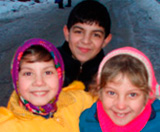
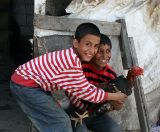
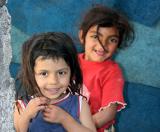
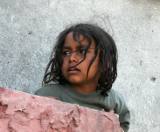
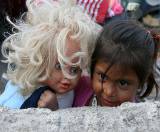
|
ROMA FILM FESTIVALS IN STRASBOURG
In the context of the project “Education of Roma Children” undertaken by the Council of Europe, the “Fortnight of Roma Cinema” took place from 1st to 14th November 2006 in the Cinema Odyssée in Strasbourg. The event was funded by the Council of Europe Permanent Representation of Finland, and it was organised in partnership with the Directorate General III - Roma and Travellers Division, the Directorate of Communication of the Council of Europe and the Cinema Odyssée. It was also very helpful to have the support of the European Roma and Travellers Forum. The aim of the “Fortnight” was twofold: firstly, to make Roma culture and Roma history more visible and more accessible to the target group, namely upper secondary school pupils, students, teachers, Roma and non-Roma educational and cultural associations, and, of course, the general public. Secondly, the aim was to promote the diffusion of information about the Council of Europe’s projects concerning the Roma. On this basis, seven films on Roma people, whether shot by Roma directors or not, were chosen for the matinée and evening shows, including “Swing” and “Latcho Drom” by Tony Gatlif, the guest of honour, Emir Kusturica’s “Time of the Gypsies” and Dorota Kędzierzawska’s “Devils, Devils”. As a matter of fact, all of these feature films depicted a wide array of outlooks on Roma in space and in time. The topics chosen for the debates were discrimination, racism and minorities in Europe, which some specialists - including Tony Gatlif, Dorota Kędzierzawska, Dominique Chansel and Georges Federmann - discussed after the shows. Furthermore, some activities were organised at the same time, for instance the concert of the “Di Mauro Swing” band and the picture exhibition of the Council of Europe, in the context of the “Dosta! Enough!” campaign, by Sandro Weltin, as well as two prize-giving ceremonies. The first one concerned the best script contest “A look at the Roma”, in the framework of the project “Education of Roma Children” (Directorate of Education). The winners were secondary school pupils: A. Basak and L. Herrman, E. Riedinger and C. Wefelscheid. The second award was for the short video contest in the context of the “Dosta!” campaign run by the Roma and Travellers Division of the Council of Europe.
Documents annexes:

The success of the first “Fortnight” led the hosts to organise the “2nd edition of the Fortnight of Roma Cinema” from 11th June to 1st July 2008. On this occasion there were nine films - such as Toni Gatlif’s “Transylvania” and “Vengo”, “When the Road Bends: Tales of a Gypsy Caravan” by Jasmine Dellal, “At Great Cost (The Horse That Cried)” by Mark Donskoi and “Life is a Miracle” by Emir Kusturica. This was followed by debates on issues like identity, diversity and discrimination against Roma,. Once again the cinema offered an ideal platform for the cultural promotion and production of educational materials. The event, organised by the Directorate of Education, Division for the European Dimension of Education, and the Cinema Odyssée, and with the financial aid of the Council of Europe Permanent Representation of Finland, had the honour of welcoming Tony Gatlif as a guest. In this case the dates of the projections were chosen in order to coincide with the inaugural meeting of the “Route of the Roma Culture and Heritage”, programme of the Directorate for Education project “Education of Roma Children” and also the Directorate of Culture - Programme of the Cultural Routes of the Council of Europe.
Documents annexes: As a result, the Council of Europe has published the pedagogical work “Roma On The Screen”. In this sense, the choice of the films - often portraying stereotypes - were taken not only to stimulate the debates but also to help create a critical vision concerning the image of Roma people, sometimes far away from the one in reality. In general, both festivals achieved all of their original aims. In fact, the two “Fortnights” attracted the attention of many Roma and non Roma people, as the full auditoriums proved, and provoked increasing interest from pupils, students and teachers towards Roma culture and history.
Documents annexes: |



 Print
Print  Send
Send  Français
Français 



